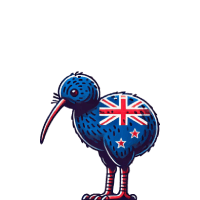The exact appearance of parasitoid wasps depends on the species. Most are extremely small (1 to 10 mm) and have brown or black bodies with long, thin antennae. However, some species belonging to the family Ichneumonidae can be over 10 cm (4 inches) long and have a very long ovipositor…
Featured Post
Taxonomy and Species Diversity
Taxonomy of the Parasitoid wasps of New Zealand
New Zealand, known for its unique biodiversity, is home to many endemic species, including parasitoid wasps. These insects play a…
Variety of wasps
Parasitoid wasps seem to be more diverse than expected. Beetles have long been the “official” insect order with the largest…
Predators and parasites
To most people, parasitic wasps are invisible. Their life cycle is quite remarkable, but they remain almost unknown outside the…
Evolutionary Adaptations of Parasitoid wasps of New Zealand
New Zealand, with its unique flora and fauna, is an interesting site for studying evolutionary processes occurring in isolated ecosystems.…
Blog
How Parasitoid Wasps Adapted to New Zealand’s Environment
Parasitoid wasps are an important group of insects that play a key role in ecosystems through their ability to control populations of other insects. New Zealand, with its unique climatic […]
Read MoreEffects of Chemicals on the Interaction of Parasitoid Wasps with Other Species
Parasitoid wasps are amazing creatures that play an important role in ecosystems by controlling the abundance of their host insects. One of the key factors that determine their behavior and […]
Read MoreApplication of Chemical Ecology of Parasitoid Wasps in Biological Pest Control
Biological control of pests is one of the key methods of sustainable agriculture, aiming to reduce dependence on chemical pesticides and preserve the natural balance in ecosystems. Parasitoid wasps play […]
Read MorePheromones and parasitoid wasps: how chemical signals determine behavior and interactions
Parasitoid wasps are a group of insects that play an important role in ecosystems through their ability to regulate the abundance of their host insects. These wasps have evolved complex […]
Read More






